Diffuse idiopathic skeletal hyperostosis (DISH) is a condition that commonly affects the spine. It is characterized by calcification (bony hardening) of ligaments, tendons and joint capsule insertions. Usually, the upper portion of the back (thoracic spine) is affected, but it may also involve the neck (cervical spine) and lower back (lumbar spine). In a few cases, the elbow, patella, calcaneus, and hip and knee joints may also be affected.
Causes of Diffuse Idiopathic Skeletal Hyperostosis
The etiology remains unknown. Diffuse idiopathic skeletal hyperostosis is more common among individuals older than 50 years of age with a male predominance.
Symptoms of Diffuse Idiopathic Skeletal Hyperostosis
Diffuse idiopathic skeletal hyperostosis is often asymptomatic. However, if symptoms occur, you may experience pain, stiffness, and loss of range of motion. DISH is usually associated with osteoarthritis.
Impact of Diffuse Idiopathic Skeletal Hyperostosis
If you have diffuse idiopathic skeletal hyperostosis, you tend to have a higher body mass index, elevated uric acid levels and a higher tendency to develop diabetes mellitus. You may develop the following complications:
- Myelopathy (spinal cord compression)
- Rarely dysphagia, which may result from the pressure of the overgrown ligamentous calcification on the esophagus
- Cervical compression, due to the formation of osteophytes in the cervical spine
- Rarely osteophytes, in the thoracic spine, which can compress the bronchi, larynx, trachea and the inferior vena cava
- Vertebral fractures, which may result from reduced flexibility of the vertebral column
Diagnosis of Diffuse Idiopathic Skeletal Hyperostosis
Your doctor may recommend imaging tests such as X-rays, CT and MRI scans to diagnose DISH. The calcification of ligaments, particularly of the anterior longitudinal ligament, has a distinct appearance of candle wax dripping down your spine.
Treatment of Diffuse Idiopathic Skeletal Hyperostosis
You may be prescribed non-steroidal anti-inflammatory drugs for pain relief. Chiropractic manipulation may also be beneficial. Arthroplasty surgery may be considered for ossification around hip and knee joints.




